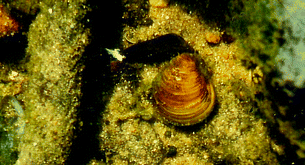Asian clam Corbicula fluminea, the amphipod Dikerogammarus villosus and the macrophyte Nuphar lutea were tested for investigating spatial and temporal variability in the bioavailability of tin and arsenic in the River Lippe, Germany. Samples were collected from September 2002 to May 2003 at a tin polluted site (source pollution) and a reference site. Additional screening sampling was carried out twice in April 2003 to test the extent of As and Sn concentration in periphyton (aufwuchs) samples. Accumulated Sn and As concentrations were measured with ICP-MS after sample processing (dissection, cryo-milling) and digestion. Quality control was performed by parallel analysis of three certified reference materials. Measurable As and Sn contents in plant tissues were only detectable in roots (below 30 μg kg−1 and 20 μg kg−1 for As and Sn, respectively). Homogenates from C. fluminea and D. villosus tissues showed site-dependent trace metal contents. Elevated bioavailability of Sn is present downstream of the sewage discharge of the world’s biggest producer of tributyltin (TBT) at Luenen (northern Ruhr region). In comparison to C. fluminea, D. villosus shows higher concentrations of tin in samples from both sites. Arsenic concentrations in C. fluminea remain constant with increasing shell size, whereas tin shows a size-dependent accumulation. The results indicate that Corbicula fluminea and Dikerogammarus villosus are suitable passive biomonitoring organisms for Sn, but As levels might be actively regulated. The concentration of tin in the periphyton (aufwuchs) samples was found to be much higher in samples from a contaminated site (428 ± 63 vs. 1949 ± 226 μg kg−1).

You have access to this article
 Please wait while we load your content...
Something went wrong. Try again?
Please wait while we load your content...
Something went wrong. Try again?


 Please wait while we load your content...
Please wait while we load your content...